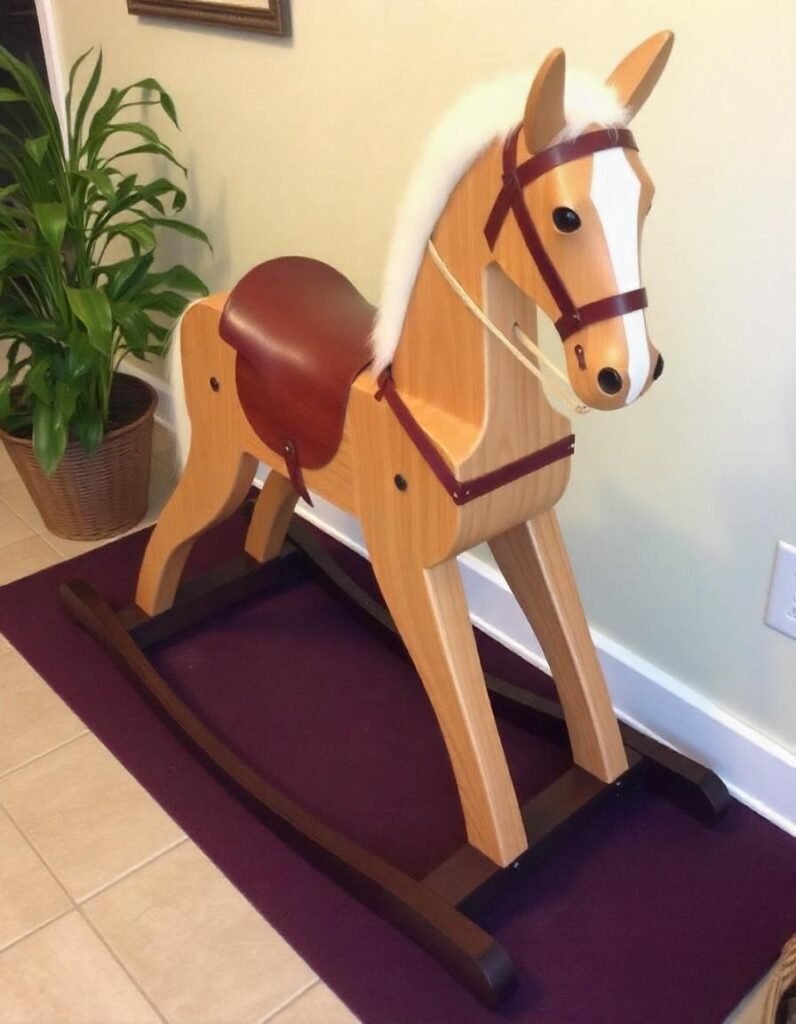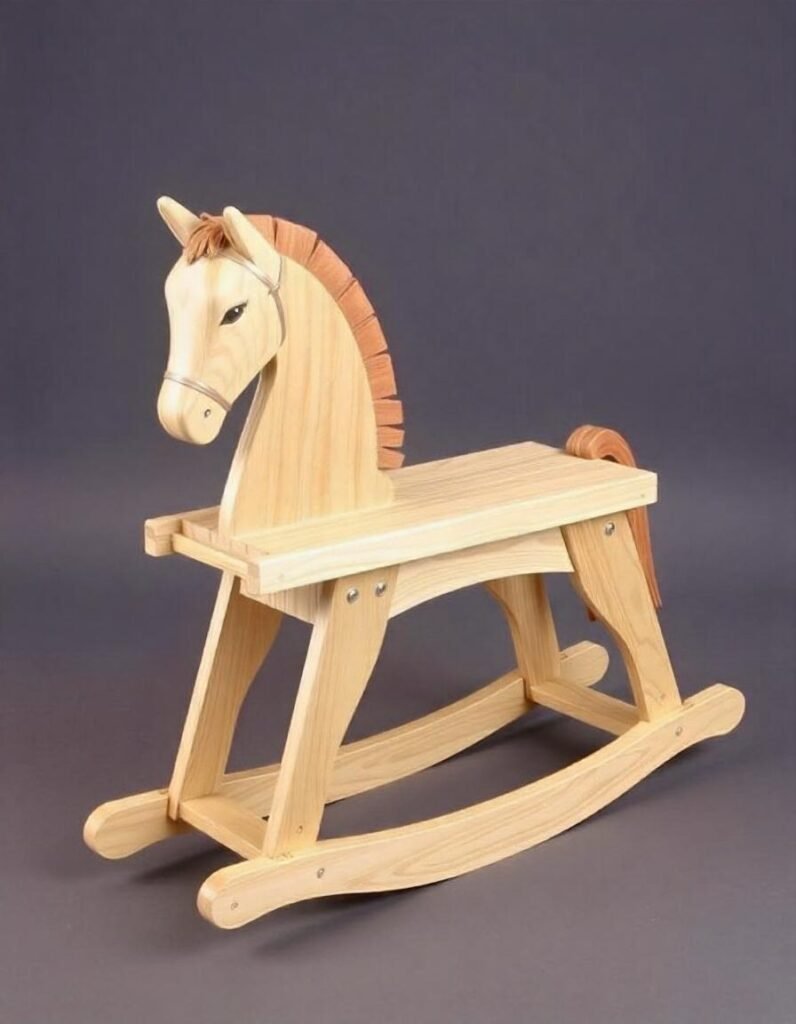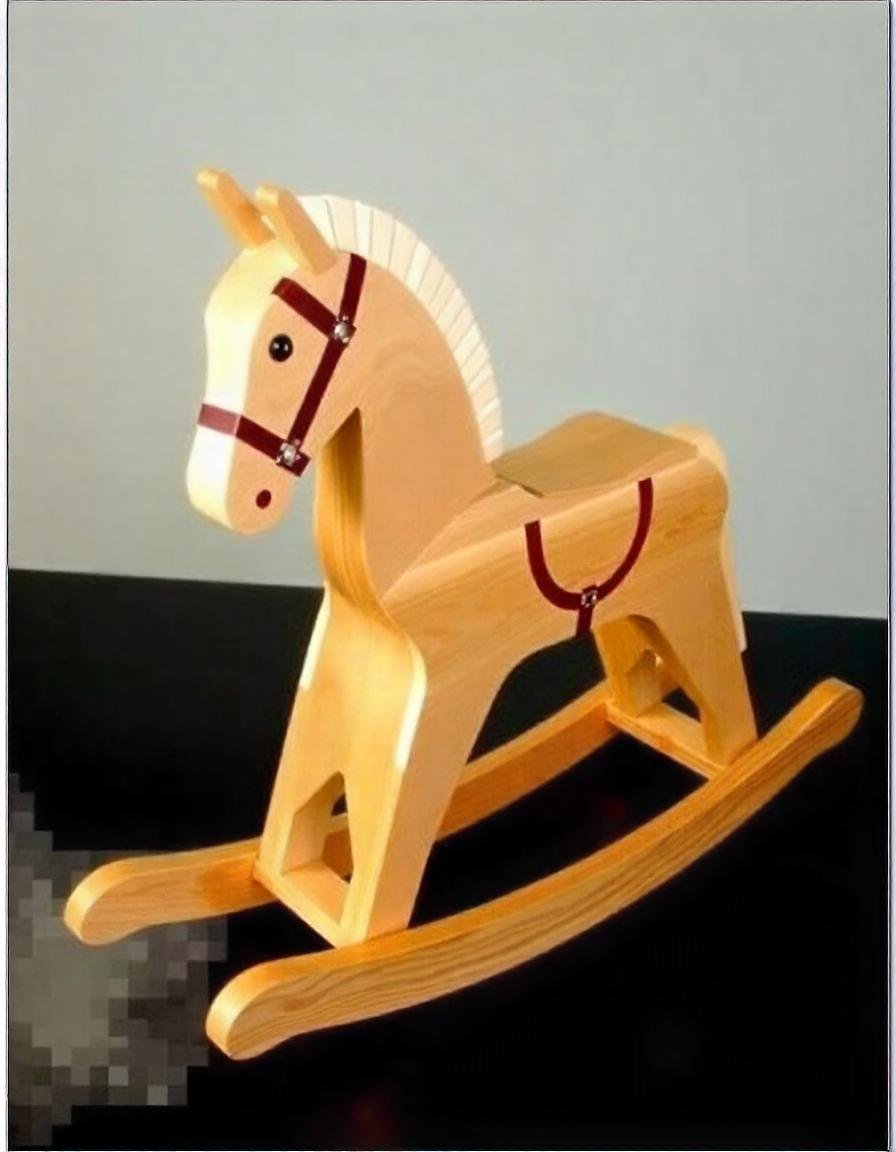Don’t Miss Out! Download Your Free Woodworking Guide Now!

Woodworking is not merely working something around your hobby; it is the act of working something beautiful out of raw wood and making it appropriate, too. One such timeless, most loved woodworking project would have to be a wooden rocking horse. But more than a plaything, a well-constructed and robust rocking horse could soon be an antique passed on through generations, redolent of so many healthy moments held within the grain. As with any good woodworking project, deep in the heart of the matter is having the best plan for the exercise. There are so many available plans to select from, and the choice can really be a bit overwhelming.
Selection criteria for choosing a perfect woodworking plan for your rocking horse that brings satisfaction and enjoyment.
- Timeless Appeal: Rocking horses are part and parcel of a child’s life, speaking so honestly of yesteryears, nostalgia, and tradition. Making a rocking horse then represents the likelihood of the maker having something physical in history—something new to adore for children today and generations to come. It’s much more than just a toy; it’s a symbol of continuity and love.
- Skill Development: Making a wooden rocking horse is a full woodworking skill-enhancing project. The project involves working on various aspects, such as accurate measurements and cutting, complex assembly, and finishing. It is a well-rounded challenge through which you can boost your woodworking skills and learn to practice and perfect techniques that any woodworker would use, regardless of the level of experience.
- Personalization: Probably the most rewarding things about making a rocking horse are the details in personalising it. From the type of wood to the finish that will match your décor or custom details such as a child’s name or unique design, it really is endless. This way, personalisation would turn any general creation into an item that speaks volumes and correctly reflects your style and handiness.
Understanding Woodworking Plans What Exactly Are Woodworking Plans?
Woodworking plans are step-by-step details on how to complete a given project, like a children’s rocking horse. Most of the plans include diagrams, measurements of the project, lists of materials, and tools needed for the project. Some plans go as far as to include extra helpful tips, techniques, and even troubleshooting advice to help in making sure that the project becomes a success. Knowing what goes into a woodworking plan is pretty important in selecting one that meets your needs and skill level. Detailed Plans: The elaborate instructions included make them quite detailed, therefore very good for beginners in the craft. They allow the project to be broken down into easy, organised steps with detailed diagrams to guide you through every phase of the build. This type of plan minimises the amount of confusion there is and ensures that those who are new to woodworking can also have a successful outcome.
- Basic Plans: These are drawn only a lot less minutely and are meant for advanced woodworkers who can use the plans without any need for explanation of key details on the plans. These kinds of plans focus on only the very basic elements, enabling resourceful woodworkers the chance to go about an assignment with their own methods of operation and innovation.
- Customizable Plans: The preliminary point that is obvious about the customizable plans is the great flexibility that is given to an individual to make the project in their way. This therefore includes size adjustment, design change, use of different kinds of materials, and in general, personalization options. They are perfect for those that desire to put their mark on the project and create something truly unique.
Don’t Miss Out! Download Your Free Woodworking Guide Now!
Things to Look for When Choosing a Woodworking Plan Skill level:
On top of the list, you should put into consideration the skill level reflected in the plan when choosing the woodworking plan. For instance, you do not expect to use a plan with tags such as “beginner-friendly” and “easy” if you are a beginner. Mostly, the plan includes an easier design and more elaborate instructions on how to go about the work, thus making it easy for you to follow through. After getting to be more skilled, then you can do more advanced projects that will need more details and advanced techniques.

Type of Rocking Horse: The style of the rocking horse you want to build is another very important consideration. Do you envision making a traditional Victorian complexly carved rocking horse, or are you more of a person wanting to make a sleek or more modernistic design? Some plans are made to be more lifelike horses, while others can give you more stylised or abstract designs.
Choose a plan that will work towards your vision, aesthetically speaking, and the general theme of all your woodwork. Materials Required These can be found within the plan. Ensure you take note of the fact that these are materials you can work with and that your budget can afford. Some plans call for special wood and speciality tools. In some cases, additional materials entail leather or fabric to complete a saddle. Be assured to feel comfortable working with these materials, and be confident you know how to work with them.
Size of the Rocking Horse: One should decide on the size of the horse they will make from wood. Some designs come in a variety of size options, meaning you can make a small one for toddlers or a larger one for an older child. So, consider the available space in the home and the age of the child who will use the horse. A well-balanced rocking horse is not only aesthetically pleasing but also safer and more fun for the child to ride on.
Where to Find Good Woodworking Plans Books and magazines
There are many excellent books and related magazines on woodworking available, which are storehouses of good plans for making a rocking horse. More often than not, these plans will be designed by experts in woodworking and will be provided with detailed sketches, sequential instructions, and tips by these experts. For those who like a real, flesh-and-blood source, popular books such as “The Complete Manual of Woodworking” and “Great Book of Woodworking Projects” are great places to start. Oftentimes, these books contain information and detail that is hard, if not impossible, to find anywhere else. Online Sources: The vastness of the Internet is filled with woodworking plans. Many can be found at sources like Etsy, Instructables, and Rockler, but they spread a great variety for novices to masters. Some of these are free, and some will come at a very minor cost, though. Purchasing a plan online means you should definitely look for reviews and the credibility of whoever made the plan. It might also be good to search for photos that users may have submitted, having finished their own project, to see if the plan really works. Such due diligence helps ensure you have landed a reliable and quality plan.
Woodworking Communities: Joining a woodworking community online or in person is a great way to get quality plans and advice from experienced woodworkers. Websites like LumberJocks and Reddit’s r/woodworking are great places to share ideas, ask questions, and get recommendations from a friendly community. In fact, such communities will even give you feedback on the plans you are thinking about, thus helping you make an informed decision.
Don’t Miss Out! Download Your Free Woodworking Guide Now!
Signs of a Good Woodworking Plan Clarity in the Instructions
The best woodworking plan should also provide easy-to-follow and very clear instructions that will help one complete a project very easily. You should look for plans that break the project into manageable steps and that have explanations about each phase, detailing how to complete such a phase. This kind of clarity is most important if a complicated technique is involved or when you have to put together several different components. A well-written plan will smoothly lead you through the procedure, and the likelihood of errors occurring is significantly less.
- Quality of Diagram: Diagrams are a necessity for every woodwork plan; they explain what the project will look like and what the right measurements and cuts are at the same time. Good plans will need to have clear, labelled diagrams that represent every part of the project and how it’s supposed to be joined. These visuals really come in handy, especially for a complex project like a rocking horse.
- Materials and Tools List: The plan is supposed to include a specific list of all materials and tools required to complete the project. It should be very specific, identifying what type of material is to be used, specifying the quantity it should be used in, and also naming the exact speciality tools to be used. Having a detailed list of materials allows a person to prepare properly and avoid having interruptions during the start-up of his or her project.
- Ability to Customise: If you’re insistent on making the rocking horse a little bit personal, then you are going to look for a plan that allows customization. This may mean a slight change in dimensions, a different finish, or some embellishments with added carvings and inlays. A good plan will give you directions about making such modifications in a way that does not destroy either the structural integrity or aesthetic appeal of the finished product.
Tips for a Successful Project Starting
If you are an amateur in woodworking, do not make the biggest mistake by starting with something too hard. This will make you continue developing or increasing confidence in your skills and abilities before moving on to more advanced concepts and ideas. Starting small really sets the scene for a successful result, allowing one to enjoy the journey and get the outcome one desires.
- Read the plan entirely: You may be tempted to start straight away by cutting or assembling different parts, but take some time to read through the whole plan to help you look out for any problems that may occur later in the process. This will also let you know that you have all the materials and tools that you need. Knowing what the entire project looks like at just a glance will keep you from mistakes or bumps on the job.
- Take Your Time: Woodworking’s cardinal rule is patience. If you take your time making a cut or taking a measurement, everything will go together right. The bottom line is this: it’s the journey that’s important, not just the final result. Rushing only leads to mistakes that are hard to correct downstream. So enjoy each step of the process in woodworking.
- Don’t fear taking advice if you feel you are losing touch or not getting something about a certain process in the plan. Whether you seek help from a skilled woodworker, follow the recommendations of the woodworking forum, or write to the person who purchased this plan, asking will certainly reduce potential trial and error in time and a few errors on your part. Better to ask a question than to make a mistake from where full recovery can be quite hard.
- Picking a Plan That’s Too Advanced: Be honest with yourself when choosing a woodworking plan. It’s the best for beginners to select a project that fits their current ability level. You’re going to frustrate yourself from the very beginning if you go with a plan that’s too complex to begin with. This simply is going to increase the risk of you developing bad habits, repeating your mistakes over and over, and probably turning out with less-than-desirable results. Start simply, and then slowly build your way up to the more challenging projects as your skills advance.
- Skipping Steps: There’s a good reason every step is included in a woodworking plan. Skipping one step, whether it be a critical measurement, some sanding, or perhaps a particular order of assembly, is sure to produce errors that will have to be corrected outside the normal process.
Don’t Miss Out! Download Your Free Woodworking Guide Now!
By following each step carefully, you will avoid these problems, and your project will turn out as intended. Never compromise when it comes to precision when doing woodworking. Before you make any cut, always verify the measurement. A minor measurement mistake will result in two parts not fitting properly, causing you wastage of materials and time. Check the measurements of your parts; it won’t take that much time but will save you big time later on. Building the horse—especially one with intricate details—is time-consuming. Underestimation of time would bring forced work, which usually brings a host of mistakes and poor workability or finishes. Plan your time accordingly and give yourself the time to work methodically. Neglecting safety measures: In woodworking, safety always takes priority. Ensure that you follow each and every guideline to work in safety: safety gear, keeping your workshop clean, and proper use of tools. Failure to heed safety can result in accidents that can cause injury to you or jeopardise your project.
Conclusion
The first step towards a rocking horse project is to choose the right woodworking plan. Prepare yourself for a good and gratifying time by reflecting carefully on your own level of skill, the style and size of rocking horse you like to see finished, and the quality of the plan itself. And actually, a well-made plan not only puts some order in your work but assures, from the very beginning, the nature of the end: something to be proud of, beautiful, useful, and very much dear as an object of your own craft. You may build a rocking horse as a gift, family heirloom, or just because you enjoy woodworking. The extra time taken to select, or even design, your own perfect horse plan may indeed pay off at the very end in the long run. Happy woodworking!

